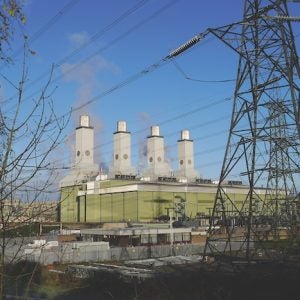
The EU Taxonomy is a classification system, establishing a list of environmentally sustainable economic activities. It provides companies and investors clarity under which conditions economic activities can be considered aligned with the European Green Deal targets. Representing a central element of the EU sustainable finance framework, the Taxonomy has been created to mobilise sustainable investments necessary to meet the climate neutrality goal by 2050.
The EU Taxonomy regulation, in force as of June 2020, defines six environmental objectives: (a) climate change mitigation; (b) climate change adaptation; (c) the sustainable use and protection of water and marine resources; (d) the transition to a circular economy; (e) pollution prevention and control; (f) the protection and restoration of biodiversity and ecosystems.
Further to the Taxonomy regulation, the European Commission has adopted two related “delegated acts” (non-legislative acts that supplement a legislative act). These cover climate change mitigation and adaptation objectives:
- The first delegated act, in operation since 2022, covers all key economic sectors essential for decarbonisation. In the energy sector, it prioritises renewable energy. Electricity generation, cogeneration of heat/cool and power and production of heat/cool, from renewable non-fossil gaseous and liquid fuels are particularly relevant for the gas turbine industry (Activity 4.7, 4.19, and 4.23). Enabling activities such as manufacture of renewable energy systems and manufacture of other low carbon technologies (Activity 3.1 and 3.6) are also of considerable importance.
- The second delegated act (known as the Complementary Delegated Act), in force since the beginning of 2023, complements the list with additional specific nuclear and natural gas energy activities recognised under certain conditions. These were included as transitional activities with the aim of accelerating the shift from solid or liquid fossil fuels, including coal, towards renewable energy sources.
Specifically, the Complementary Delegated Act introduced three gas-related activities:
- Electricity generation from fossil gaseous fuels;
- High-efficiency cogeneration of heat/cool and power from fossil gaseous fuels; and
- Production of heat/cool from fossil gaseous fuels in an efficient district heating and cooling system
Each of these gas-related activities needs to meet either of the following emission thresholds:
- lifecycle emissions below 100 gCO2e/kWh, or
- direct emissions below 270 gCO2e/kWh or, for the activity of electricity generation, the annual direct GHG emissions must not exceed an average of 550 kg CO2e/kW of the facility’s capacity over 20 years. In this case, the activity must meet a set of cumulative conditions, eg: it replaces a facility using solid or liquid fossil fuels; the activity ensures a full switch to renewable or low-carbon gases by 2035; and regular independent verification of compliance with the criteria is carried out. In addition to this, the construction permit must be issued by the end of 2030 and the facility must be constructed where renewables are not available at sufficient scale.
As these activitiers are considered transitional, all the limits will be reviewed every three years.
Recognising the role of unabated natural gas as a transition fuel in the decarbonisation process was an important and welcomed step by many stakeholders as it considered different starting points across Europe and pragmatically reflected the enormous challenge of the energy transition process.
This move offers new opportunities for exploiting the full potential of the role that gas turbines will continue to play in the energy transformation process. Not only does this technology offset the disadvantages of renewable energy sources, like intermittency and geographic limitations, it will also help scale up investments that will accelerate the transition of gas turbine technology to enable a switch to renewable and low-carbon gases, in line with the latest EU energy targets.
What’s in it for the GT industry?
There are various ways in which gas turbines are expected to play an important role in the above recognised activities.
Specifically, these activities include construction and operation of (i) power generation facilities, (ii) combined heat/cool and power generation facilities and (iii) heat/cool generation facilities. In case of the latter two, this explicitly also covers refurbishment of existing facilities. As such, gas turbines can represent a crucial element of new investment projects (through capital expenditure) that involve either construction of a new facility or refurbishment of an existing facility.
Furthermore, companies operating facilities using gas turbines that meet the Taxonomy criteria will be able to claim recognition of the proportion of their turnover derived from the recognisable activities as Taxonomy aligned.
All this is expected to increase demand for gas turbine technologies that allow compliance with the Taxonomy criteria and improve the environmental performance and efficiency of their operation over time. The ultimate goal is to promote the best-in-class technologies that will ensure a full switch to renewable fuels by 2035 at the very latest.
The EU Taxonomy criteria provide a reference point for companies in their decision-making regarding their green transition. Companies can use the EU Taxonomy to improve their overall environmental performance (either by upgrading current activities or starting new activities) and to attract investors.
Companies that fall under the scope of the Non-Financial Reporting Directive (the future Corporate Sustainability Reporting Directive – CSRD) have to disclose to the financial markets whether or not they have Taxonomy-aligned activities. They are requested to report the share of their Taxonomy-aligned turnover and expenditures (capital and operational). Based on this, investors can make informed investment decisions accordingly. Companies with Taxonomy-aligned activities will benefit from investors and banks interested in green investments, as they will be looking to finance Taxonomy-aligned economic activities.
The Taxonomy brings more clarity also to institutional investors and banks wishing to finance environmentally sustainable activities. They can aspire to design their financial products in such a way as to fund exclusively Taxonomy-aligned activities via green bonds and loans. This means that a company applying for a bank loan may be able to get a better interest rate if the purpose of the loan is to reach the Taxonomy alignment of a given activity or to fund Taxonomy-aligned activities.
While it is not mandatory for companies to ensure their economic activities meet the criteria of the Taxonomy, it motivates companies to strive to reach a level of environmental performance aligned with the European Green Deal ambition. Other policy initiatives such as the EU Green Bond Standard, will ensure that Taxonomy-aligned activities are visible and recognised in investment decisions. Companies that wish to make a substantial contribution to reaching the climate and environmental objectives can voluntarily decide to use these criteria when planning their transition to sustainability.
Author: Christer Björkqvist managing director, ETN Global, Brussels, Belgium






